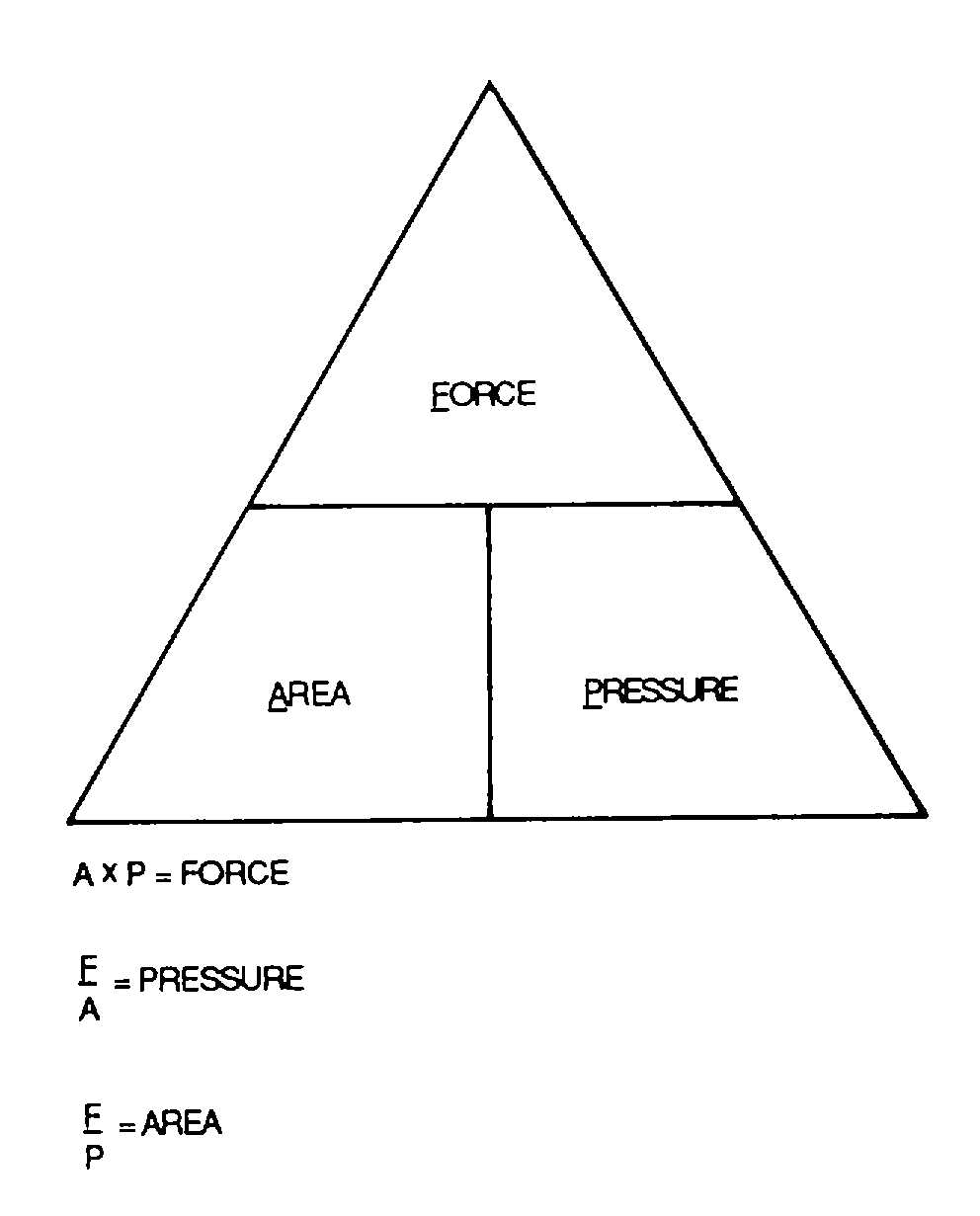TM 1-1500-204-23-2
CHAPTER 2
PNEUDRAULICS GENERAL
2-1.
Pneudraulics Theory and Basic Principles. The aircraft hydraulic system transmits engine power to distant
points on the aircraft. This force is carried by hydraulic fluid confined In a system of tubing and hoses
a.
Qualities of Hydraulic Fluid. Hydraulic fluid can be described In terms of three physical qualities
(1)
Incompressibility. For practical purposes, liquids are incompressible This means that even under
extremely high pressure a liquid cannot be made much smaller.
(2)
Expansion and contraction. Liquids expand and contract with changes in temperature. When a liquid
in a closed container is heated, the liquid expands and puts pressure on the walls of the container. As the liquid cools,
the pressure decreases.
(3)
Pressure transmission. Pressure applied to a confined liquid is transmitted equally. If an opening
exists in a system, such as an actuator, the fluid will act on it, causing it to move.
b.
Computation of Force, Area, and Pressure. Hydraulic systems are designed to take advantage of the
characteristics of liquids as they relate to force, area and pressure. These terms as used in hydraulics are defined as
follows:
(1) Force. Force is the amount of push or pull applied to an object. The force applied to a piston head, for
example, is the energy applied to the total area of the piston head. In this manual, we measure force in pounds.
(2)
Area. Area is the measurement of a surface In the aircraft hydraulic system, we are concerned with
the areas of piston heads If we know this area, we can compute the amount of force needed to start a mechanism
moving In this manual, area Is measured in square inches.
(3) Pressure. Pressure is the force applied to one unit of area-usually 1 square inch. The pressure on a
piston head develops the force that operates a mechanism. In our work, we measure pressure in pounds per square inch
(psi).
(4)
Computation. If you know any two of these factors, you can easily compute the third by using the
equation illustrated In figure 2-1. To apply this equation, multiply the two lower factors together to get the top factor, and
divide the top factor by the known lower factor to get the unknown lower factor.
Figure 2-1. Computing Force Pressure, and Area
2-1

